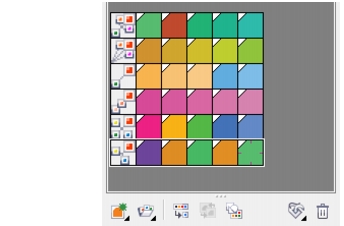Mastering Color Harmony Rules: A Comprehensive Guide to Applying Rules in CorelDRAW
James February 17, 2024
Introduction:
Color harmony rules form the bedrock of visually pleasing and well-coordinated designs, providing designers with guidelines to achieve balance and aesthetic appeal. CorelDRAW, a robust vector graphics editor, empowers designers with versatile tools to apply color harmony rules seamlessly. This extensive guide explores the intricate process of applying rules to color harmonies in CorelDRAW, emphasizing the importance of structure, step-by-step instructions for the application process, and advanced techniques to unlock the full potential of this feature.
Section 1: Understanding the Significance of Color Harmony Rules
1.1 The Art and Science of Color Harmony: Delve into the art and science of color harmony, where rules serve as guiding principles for combining colors in a visually pleasing manner. Understand the impact of color harmony rules on design aesthetics, conveying emotions, and establishing a cohesive visual language.
1.2 Enhancing Design Consistency: Explore how color harmony rules contribute to design consistency. By adhering to established rules, designers ensure that their color choices resonate with the intended message, maintain brand identity, and create a harmonious visual experience for the audience.
Section 2: Navigating CorelDRAW’s Color Harmony Rule Tools
2.1 Exploring CorelDRAW’s Color Harmony Rule Docker: Familiarize yourself with the Color Harmony Rule docker, a central tool for managing and applying color harmony rules. Understand its features, including options for selecting, modifying, and fine-tuning rules seamlessly.
2.2 Understanding Rule Types: Recognize the different types of color harmony rules available in CorelDRAW. From complementary and analogous to triadic and tetradic, grasp the unique characteristics and applications of each rule type.
Section 3: Step-by-Step Guide to Applying Color Harmony Rules
3.1 Selecting the Target Color Harmony: Initiate the rule application process by selecting the color harmony to which you want to apply a rule. This could be an existing harmony applied to text, shapes, or illustrations within your design.
3.2 Accessing the Color Harmony Rule Docker: Navigate to the Color Harmony Rule docker within CorelDRAW. Gain a thorough understanding of its layout and functionality, particularly focusing on options for selecting and applying color harmony rules.
3.3 Choosing the Desired Rule Type: Explore the available rule types within the Color Harmony Rule docker. Choose the rule that aligns with your design vision and objectives, ensuring that it complements the selected color harmony and overall project theme.
3.4 Real-time Preview and Adjustments: Utilize the real-time preview feature to assess the impact of your chosen rule on the selected color harmony. CorelDRAW’s responsive interface enables designers to see the changes instantly, allowing for informed and precise rule applications.
3.5 Fine-Tuning Rule Parameters: Fine-tune the parameters of the selected rule to achieve the desired effect. Whether adjusting the angle, contrast, or proportions, CorelDRAW provides granular control over the application of color harmony rules.
3.6 Confirming the Rule Application: Finalize the application of the color harmony rule. Confirm your selections, ensuring that the chosen rule enhances the visual appeal of the selected objects while maintaining overall design coherence.
Section 4: Applying Rule-Based Color Harmonies to Design Elements
4.1 Exploring Rule-Based Color Harmony Applications: Explore various scenarios for applying rule-based color harmonies to different design elements. Whether refining typography, updating infographics, or enhancing illustrations, rule-based color harmonies can be adapted to suit diverse elements, providing a consistent and polished visual language.
4.2 Accessing the Color Harmony Rule Docker for Each Element: Understand how to access the Color Harmony Rule docker for different design elements in your project. CorelDRAW allows for seamless application of rule-based color harmonies to multiple objects, ensuring a unified and structured color scheme.
4.3 Fine-Tuning Rule-Based Color Harmony Applications: Learn how to fine-tune rule-based color harmony applications for different design elements. CorelDRAW offers flexibility in adjusting the intensity, saturation, or proportions of specific colors within the harmony, providing nuanced control over your design’s visual impact.
Section 5: Advanced Techniques for Rule-Based Color Harmony Customization
5.1 Creating Custom Rule Parameters: Delve into the advanced features of creating custom rule parameters within color harmonies. Learn how to add unique angles, adjust contrast levels, and experiment with additional parameters to elevate your rule-based color harmony customizations.
5.2 Combining Rule-Based Color Harmonies with Other Effects: Explore techniques for combining rule-based color harmonies with other effects in CorelDRAW. Whether it’s blending color harmonies with textures, applying transparency masks, or using them in conjunction with other design tools, discover how to push the boundaries of your design creativity.
Section 6: Troubleshooting and Tips for Effective Rule-Based Color Harmony Management
6.1 Addressing Rule Consistency Challenges: Understand how to troubleshoot rule consistency challenges when applying rules across different objects or projects. Explore tips for ensuring seamless integration and maintaining a structured visual language.
6.2 Managing Rule Libraries: Learn effective strategies for managing your rule libraries. From organizing rules to creating backups, efficient management ensures a streamlined workflow and easy access to the structured color schemes you need.
Section 7: Collaborative Workflows and Rule-Based Color Harmony Application
7.1 Sharing Rule-Based Color Harmonies: In a collaborative design environment, explore methods for sharing rule-based color harmonies with team members. Learn how to export and import rules to maintain consistency across projects.
7.2 Establishing Rule-Based Color Harmony Application Guidelines: Enhance collaborative workflows by establishing guidelines for rule-based color harmony application. Communicate best practices and conventions to ensure a unified approach to rule-based color harmonies across the design team.
Conclusion:
In conclusion, the ability to apply rules to color harmonies in CorelDRAW is a crucial skill for designers seeking to infuse their projects with structure and visually pleasing color combinations. Whether you are a seasoned professional or a newcomer to the world of graphic design, this comprehensive guide equips you with the knowledge and techniques needed to harness the power of rule-based color harmonies. By understanding the significance of color harmony rules, navigating CorelDRAW’s color harmony rule tools, following a step-by-step guide for applying rules, exploring advanced customization techniques, and implementing effective troubleshooting and collaborative workflows, designers can unlock the full potential of CorelDRAW’s rule-based color harmony features for structured and aesthetically refined design experiences.






